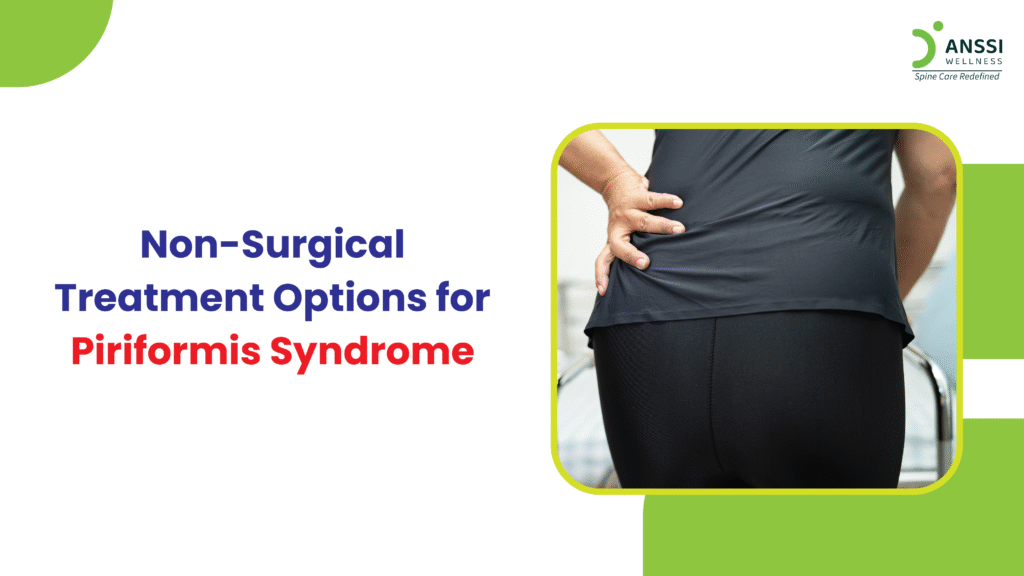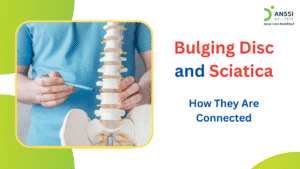Piriformis Syndrome is a neuromuscular condition that can significantly disrupt daily life. It happens when the sciatic nerve is compressed or irritated by the piriformis muscle, which is situated deep within the buttock. The ensuing pain, which frequently travels down the leg from the lower back or buttocks, can resemble sciatica.
Because of its similarity to other conditions, Piriformis Syndrome is frequently underdiagnosed or misdiagnosed, leading many to seek invasive solutions prematurely. However, many effective non-surgical treatments can help relieve symptoms and restore quality of life without the risks of surgery, medications, or injections.
Recognising the Symptoms of Piriformis Syndrome
Piriformis Syndrome typically presents with a combination of the following symptoms:
- Persistent pain in the buttock area
- Radiating pain along the path of the sciatic nerve (into the thigh and leg)
- Tingling or numbness in the leg
- Pain that worsens with prolonged sitting, climbing stairs, or intense physical activity
These symptoms are often mistaken for other causes of sciatica, making it essential to consult a qualified specialist for accurate diagnosis.
What Causes Piriformis Syndrome?
The piriformis muscle is responsible for rotating the hip and stabilising the pelvis during movement. Several factors can lead to its dysfunction, including:
- Muscle overuse or strain: Repetitive activities like running or cycling can irritate the muscle.
- Prolonged sitting: Common among office workers and drivers, this can tighten the piriformis muscle over time.
- Trauma or injury: Falls or direct impact to the buttock may inflame the muscle.
- Anatomical variations: In some people, the sciatic nerve passes through or around the piriformis muscle, increasing the risk of compression.
Understanding the root cause is key to determining the most effective treatment strategy.
Conservative and Non-Surgical Treatment Options
Fortunately, Piriformis Syndrome can often be managed successfully without surgery. Here are the most widely recommended non-surgical approaches:
Medications (Short-Term Relief)
Over-the-counter pain relievers such as nonsteroidal anti-inflammatory drugs (NSAIDs) like ibuprofen can help manage inflammation and reduce pain. In more severe cases, physicians may prescribe muscle relaxants or localised corticosteroid injections.
However, while medications can offer short-term relief, they do not address the root cause of the condition. Prolonged use of medications may also carry side effects.
Physical Therapy
Physical therapy is often a cornerstone of conservative treatment. A structured therapy plan may include:
- Targeted stretches to loosen the piriformis muscle and surrounding tissues.
- Strengthening exercises for the core, hips, and gluteal muscles to improve support and alignment.
- Postural training and ergonomic education to minimise daily strain.
- Manual therapy and massage to improve blood flow and reduce muscle tension.
These exercises can gradually relieve nerve compression, improve flexibility, and reduce the likelihood of recurrence.
Complementary Therapies
Other therapies can support healing and enhance the benefits of primary treatments:
- Heat and cold therapy: While cold lowers inflammation, heat eases tense muscles.
- Ultrasound therapy: Helps promote deep tissue healing and reduce pain.
- Electrical stimulation (TENS): Temporarily blocks pain signals and improves blood flow.
These therapies are often used in conjunction with physical therapy to maximise results.
Consulting with a Medical Expert
If you’re experiencing persistent buttock or leg pain that interferes with daily activities, it’s important to consult a specialist who can provide a clear diagnosis and develop a tailored treatment plan.
Ignoring the symptoms or relying solely on painkillers can allow the condition to worsen over time. Adopting a multi-disciplinary approach that combines conservative therapies with expert clinical care provides safe and sustainable relief.
About ANSSI:
ANSSI Wellness focuses on improving the quality of life for patients suffering from spinal issues, aiming to provide relief where other conventional treatments have failed. Through advanced non-surgical spinal decompression treatment, ANSSI is committed to helping patients avoid surgery and recover in a safe, effective, and compassionate environment.
Connect with ANSSI Wellness on LinkedIn, Instagram, and Facebook for expert guidance.



